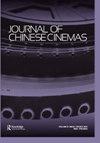From provincial to international: Competing imaginings and representations of taiyupian in news reports between 1956 and 1958
IF 0.4
3区 艺术学
0 FILM, RADIO, TELEVISION
引用次数: 0
Abstract
Abstract As Taiwan’s film policy reform was taking place between 1956 and 1958, the definition of guochanpian (domestically produced films) and the qualification of taiyupian (Taiwanese-language films) as guochanpian were debated by the KMT party and the film administration. The press also engaged in the controversy by publishing special issues, opinion pieces, and meeting minutes in newspapers. In this essay, I investigate the formation of the meanings of taiyupian in the journalistic field between 1956 and 1958. The discussion focuses on the special issue published by Lianhe bao (United Daily News) in 1956 and the meeting minutes by Zhengxin xinwen (Credit News) in 1957 that displayed the conflicting tendencies to provincialize taiyupian and modernizing, localizing, internationalizing taiyupian. Through analyzing narratives and rhetoric employed to position taiyupian in news reports, this essay differentiates between imaginings and (re)presentations by two organizing concepts, Sinocentric Chinese nationalism and cosmopolitanism. This discussion concludes with an analysis of The First Taiyupian Festival in 1957, as it realized the imaginings of taiyupian that emerged in the meeting held by Zhengxin xinwen and generated a spectacular industrial, social, and discursive phenomenon that made taiyupian a vigorous discursive force in the discourse of modernity and national cinema.从地方到国际:1956 - 1958年间新闻报道中对太极片的竞争想象与表现
1956年至1958年台湾电影政策改革期间,国产片(国产片)的定义和台语片(台语片)作为国产片的资格问题一直是国民党和电影局争论的焦点。媒体也通过在报纸上刊登特刊、评论文章和会议纪要等方式参与了这场争论。本文考察1956年至1958年间新闻界“太极图”词义的形成。重点讨论1956年《联合日报》专刊和1957年《信用报》的会议纪要,其中表现出太极拳地方化与太极拳现代化、地方化、国际化的矛盾倾向。本文通过分析新闻报道中对太极图定位的叙事和修辞,以中国民族主义和世界主义两个组织概念来区分想象和(再)呈现。本文最后对1957年的《第一届太极图节》进行了分析,因为它实现了在郑欣欣文举行的会议中产生的太极图想象,并产生了一种壮观的工业、社会和话语现象,使太极图成为现代性和民族电影话语中充满活力的话语力量。
本文章由计算机程序翻译,如有差异,请以英文原文为准。
求助全文
约1分钟内获得全文
求助全文

 求助内容:
求助内容: 应助结果提醒方式:
应助结果提醒方式:


